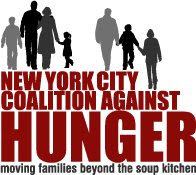
President Barack Obama followed his historic inauguration on January 20th with quick action to “bail out” the many Americans who continue to suffer as a result of the economic recession.
On Wednesday, January 29th, the House approved an $819 billion economic recovery plan which includes, among other items, $20 billion over the next two years for the Supplemental Nutrition Assistance Program (SNAP, formerly known as the food stamp program).
As Joel Berg wrote in a recent op-ed entitled Progressives Should Stop Carping and Start Fighting, “As an anti-hunger advocate, I am overjoyed that the bill would provide the largest investment in new nutrition assistance funding in decades.” Directly addressing some progressive critics, Berg called for anti-hunger advocates of all political persuasions to support the bill’s funding levels.
So, what if the Congress finally passes the “Bailout for the Hungry.” Then what? Although the stimulus package is a promising first step, it will not end hunger. As Neil deMause recently wrote, “At his inauguration, Obama called on
In this historic moment of renewed energy and hope, we must commit to ending hunger: by advocating for changes in government policies, organizing, and engaging in long-term volunteer work. Promisingly, the New York City Coalition Against Hunger’s recent Sixth Annual Martin Luther King Serve-a-Thon brought out both elected officials and volunteers from all over
Said State Senator Liz Kruger, it is time to “renew our commitment to ending hunger” and to ensure that “in these troubled times … the government to help those who are most in need.”

